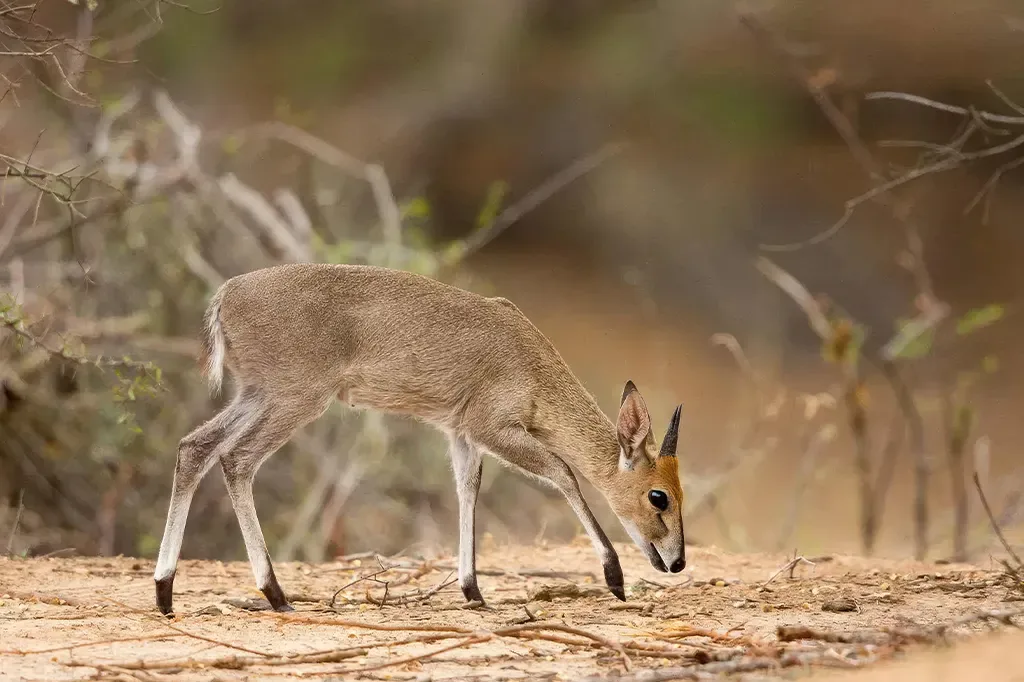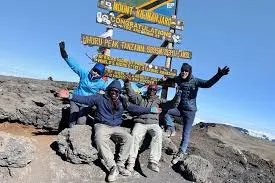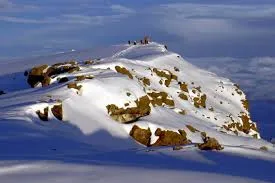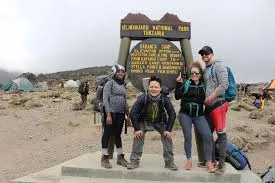Kilimanjaro Wildlife Guide: Animals You Might Encounter
Mount Kilimanjaro is home to diverse wildlife that changes as you move through its different ecological zones. From the lush forests at the base to the alpine deserts higher up, trekkers may spot a variety of animals, birds, and unique insects. While large wildlife is less common at higher altitudes, the lower slopes are rich with biodiversity. This is a quick guide to some of the animals you might encounter on a 6–9 day Kilimanjaro trek with Capable Africa Tours.
Plan Your Kilimanjaro Trek Now
Discover Kilimanjaro’s Diverse Wildlife
Mount Kilimanjaro, Africa’s highest peak, is a trekking paradise and a haven for diverse wildlife. As you climb through its five ecological zones, rainforest, heath, moorland, alpine desert, and arctic summit, you’ll see unique animals that have adapted to these environments. From vibrant birds to elusive mammals, this guide by Capable Africa Tours points out the animals you might encounter, their habitats, and tips for spotting them safely.
Wildlife by Ecological Zone
| Zone | Elevation | Animals Commonly Seen | Best Routes for Sightings |
|---|---|---|---|
| Rainforest | 1,800–2,800m | Colobus monkeys, blue monkeys, bushbabies, turacos | Marangu, Machame, Lemosho |
| Heath/Moorland | 2,800–4,000m | White-necked ravens, duikers, mongooses | Machame, Lemosho, Umbwe |
| Alpine Desert | 4,000–5,000m | Kestrels, rock hyraxes, occasional leopards | Rongai, Machame |
| Arctic Summit | 5,000–5,895m | Rare sightings (mostly birds like ravens) | All routes |
What animals you may see
Mount Kilimanjaro is home to a diverse range of wildlife, particularly in the lower, forested areas. While climbing, you might encounter monkeys, including blue monkeys and colobus monkeys, as well as various antelope species like bushbucks and duikers. You may also spot smaller mammals like tree hyraxes and serval cats, and reptiles like Jackson's chameleons. While larger mammals like elephants and buffaloes are present, they are less frequently seen by climbers, especially on the higher trails. Below is a full list of animals you may see during your Kilimanjaro Trek.
- Colobus Monkeys: Black-and-white primates with flowing tails, often seen in rainforest canopies. Look for them in Marangu or Machame routes.
- Blue Monkeys: Agile, social monkeys with a bluish-grey coat, active in the rainforest zone.
- Elephants: Rare but possible in lower rainforest areas, especially on Lemosho route trails.
- Leopards: Elusive big cats, occasionally spotted in heath or alpine zones. Extremely rare sightings.
- Bushbabies: Small, nocturnal primates with large eyes, heard more often than seen in rainforest camps.
- Turacos: Vibrant birds with red and green plumage, common in rainforest zones. Listen for their distinctive calls.
- White-Necked Ravens: Large, intelligent birds seen across heath and moorland zones, often near camps.
- Duikers: Small antelopes hiding in dense vegetation, most common in heath zones.
- Rock Hyraxes: Small, rodent-like mammals found in rocky alpine areas, basking in the sun.
Why Wildlife Spotting Enhances Your Kilimanjaro Trek
Encountering wildlife on Kilimanjaro adds an exciting element to your trek. The mountain’s ecosystems are home to different animals, from playful monkeys to majestic birds. This gives trekkers a unique safari-like experience. With Capable Africa Tours, our expert guides will point out wildlife and share insights about their behaviors. They ensure a safe and rewarding adventure.
Benefits of Wildlife Spotting:
- Enriches your trekking experience with nature’s wonders.
- Provides opportunities for stunning photography.
- Deepens your appreciation for Kilimanjaro’s ecosystems.
- Creates memorable moments with expert-guided insights.
Tips for Safe and Responsible Wildlife Viewing
Spotting wildlife on Kilimanjaro is exciting, but it requires respect and caution. Follow these tips from Capable Africa Tours to ensure safe and ethical wildlife encounters during your 6–9 day trek.
- Stay Quiet and Alert: Move silently in rainforest zones to avoid startling animals like monkeys or birds.
- Use Binoculars: 8x42 or 10x42 binoculars help you observe distant wildlife without disturbing them.
- Follow Your Guide: Stay close to your Capable Africa Tours guide, who knows safe viewing spots and animal behaviors.
- Avoid Feeding Animals: Feeding disrupts their diet and behavior, harming the ecosystem.
- Keep a Safe Distance: Maintain at least 20–30 meters from mammals to avoid stress or danger.
- Use a Telephoto Lens: Capture photos without flash to avoid startling animals, especially nocturnal ones like bushbabies.
- Stick to Trails: Prevent habitat damage and reduce the risk of encountering snakes or other hidden animals.
Experience Kilimanjaro’s Wildlife with Capable Africa Tours
Join Capable Africa Tours for an unforgettable Kilimanjaro trek, where wildlife sightings add magic to your journey. Watch this video to preview the animals and landscapes awaiting you.
Ready to Explore Kilimanjaro’s Wildlife?
Trek Mount Kilimanjaro with Capable Africa Tours and immerse yourself in its vibrant wildlife. Our expert guides ensure safe, memorable encounters with animals like colobus monkeys and turacos while leading you to the summit.
- 98% summit success rate with expert guides
- Wildlife-focused treks with eco-friendly practices
- Customizable routes for optimal animal sightings
- All-inclusive packages with meals and transfers
- Local guides with deep knowledge of Kilimanjaro’s ecosystems
Limited spots for Kilimanjaro treks — book now to secure your wildlife adventure!
Plan Your Trek Now


